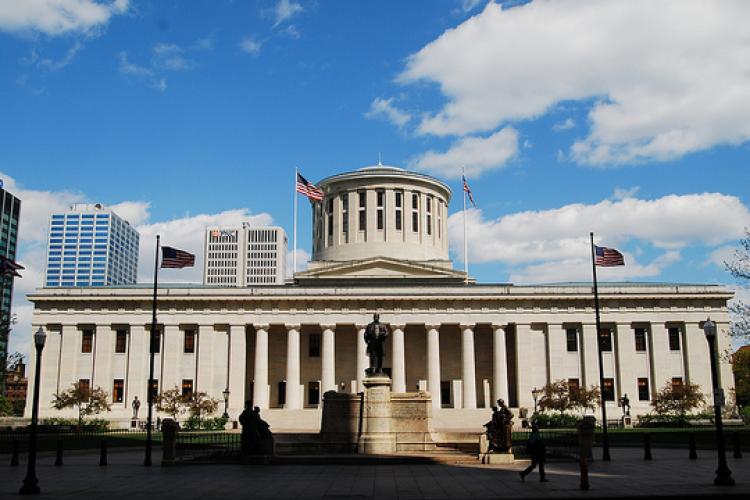
On December 27, Ohio Governor John Kasich vetoed Substitute House Bill 554 (Sub. HB 554), which would have extended the two year freeze of the state’s renewable portfolio standard and energy efficiency resource standard (EERS). Specifically, Sub. HB 554 would have imposed an unenforced 1% annual energy savings requirement through 2018, an enforced 1% annual energy savings requirement through 2025 and a 2% annual energy savings requirement through 2027.
Background on the Freeze
Senate Bill 221 (SB 221), which created Ohio’s EERS, requires investor-owned electric utilities and retail suppliers to achieve savings through energy efficiency programs equal to at least 0.3% of sales, gradually ramping up to a cumulative 22% in electricity reduction by 2025.
In the years since SB 221’s passage, Ohio’s EERS has been tremendously successful; annual savings increased twelve-fold and Ohio utilities have collectively exceeded the savings targets every year since 2009 by an average of more than 50% above the target. Despite this success, legislation signed by Kasich in 2014 froze both the EERS and renewable standards for two years.
The Thaw Begins
On November 1, MEEA Policy Manager Nick Dreher and Policy Associate Leah Scull held individual meetings with several Ohio legislators in Columbus. MEEA reviewed the impact of energy efficiency in Ohio and the reduction in energy efficiency investment and energy savings since the repeal of the efficiency standard in Indiana, in addition to discussing the 2016 report by MEEA and the Cadmus Group, The Economic Impacts of Energy Efficiency Investments in Ohio, which found that energy efficiency investments in 2014 alone resulted in nearly 3,000 new jobs, more than $175 million in increased statewide income, about $270 million in total net economic value and over $500 million in net sales.
MEEA staff also submitted written testimony to both the House Public Utilities and the Senate Energy and Natural Resources committees during the Sub. HB 554 hearings.
Kasich Cites MEEA Research in Veto
With Kasich’s veto of Sub. HB 554, Ohio’s EERS will resume on January 1, 2017 at 1% annual energy savings through 2020 and 2% thereafter. In his statement of the reasons for the veto, Kasich stated that “the bill would deal a setback to efforts that are succeeding in helping businesses and homeowners reduce their energy costs through increased efficiency.” The governor’s statement also cited The Economic Impacts of Energy Efficiency Investments in Ohio report: “Energy efficiency investments from 2009- 2012 alone have yielded $1.03 billion in savings to date and will result in $4.15 billion in lifetime savings thanks to the state’s existing energy efficiency standards.”
What Lies Ahead
Despite Governor Kasich’s veto of Sub. HB 554, the 2014 bill that created the two year EERS freeze, Senate Bill 310, also made some notable changes to SB 221 that remain in effect. For example, utility upgrades to transmission and distribution unrelated to reductions in their customers’ energy usage, now count towards the EERS targets. Utilities can also count energy savings achieved independently by customers towards their overall compliance with the target. SB 310 also established an industrial opt-out, which allows large energy users to avoid paying into utility energy efficiency programs.
More Information
For questions about MEEA’s resources and activities related to energy efficiency policy in Ohio, please contact Policy Associate Leah Scull at lscull@mwalliance.org.
Update (1/6/17): Sections were added detailing MEEA’s policymaker outreach and the future of EE in Ohio.
Photo credit: Arlenz Chen